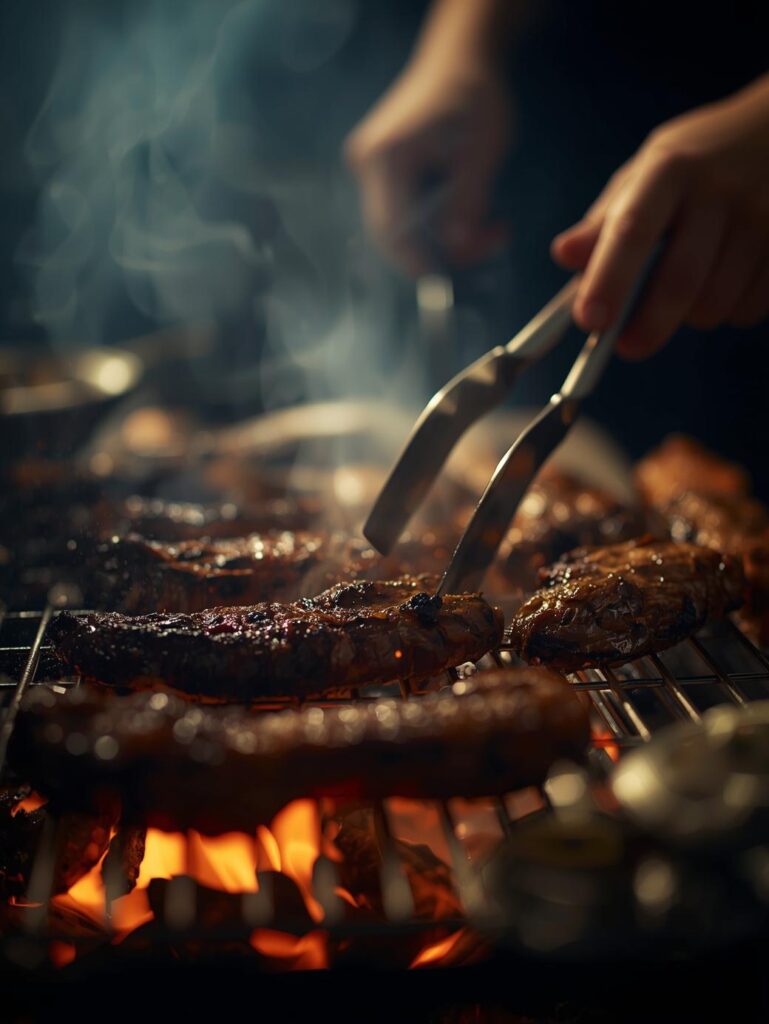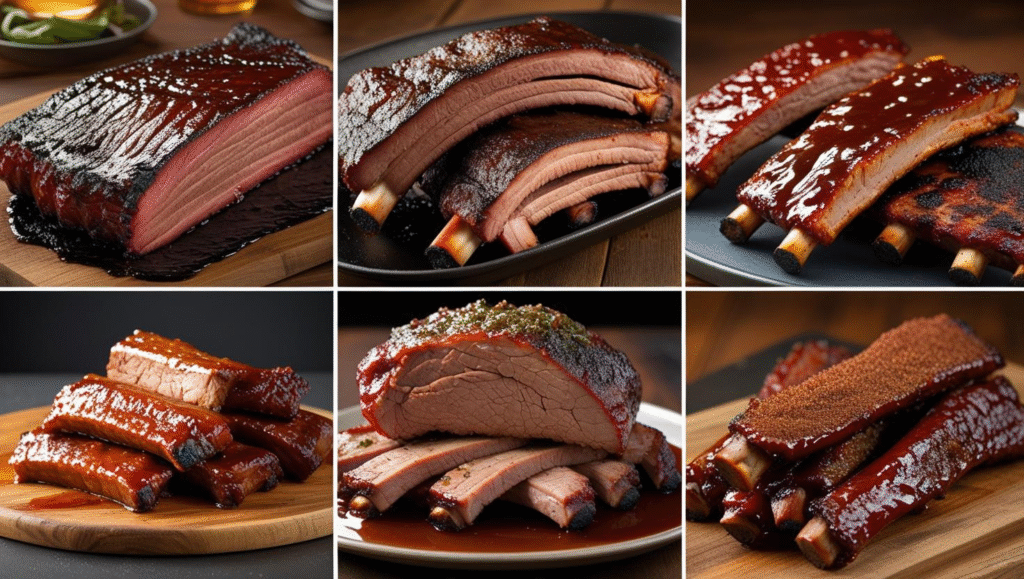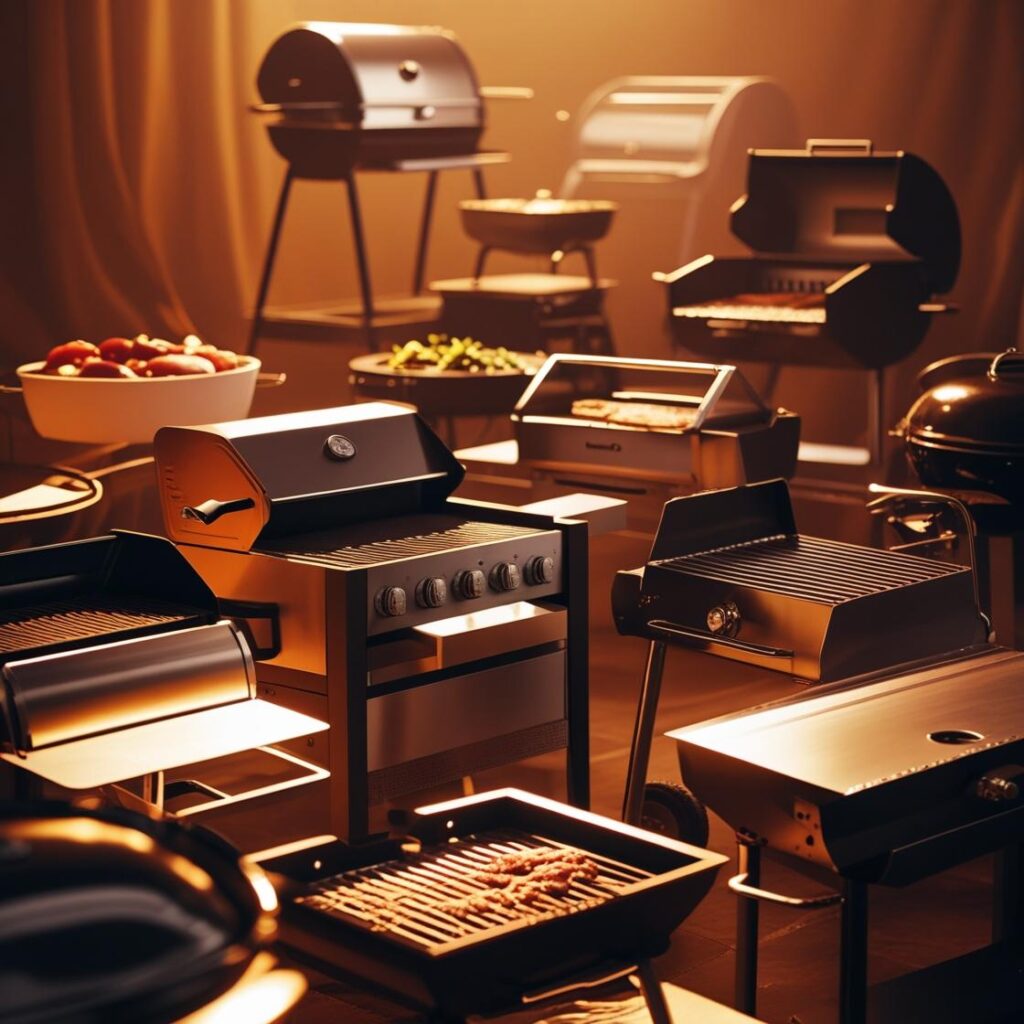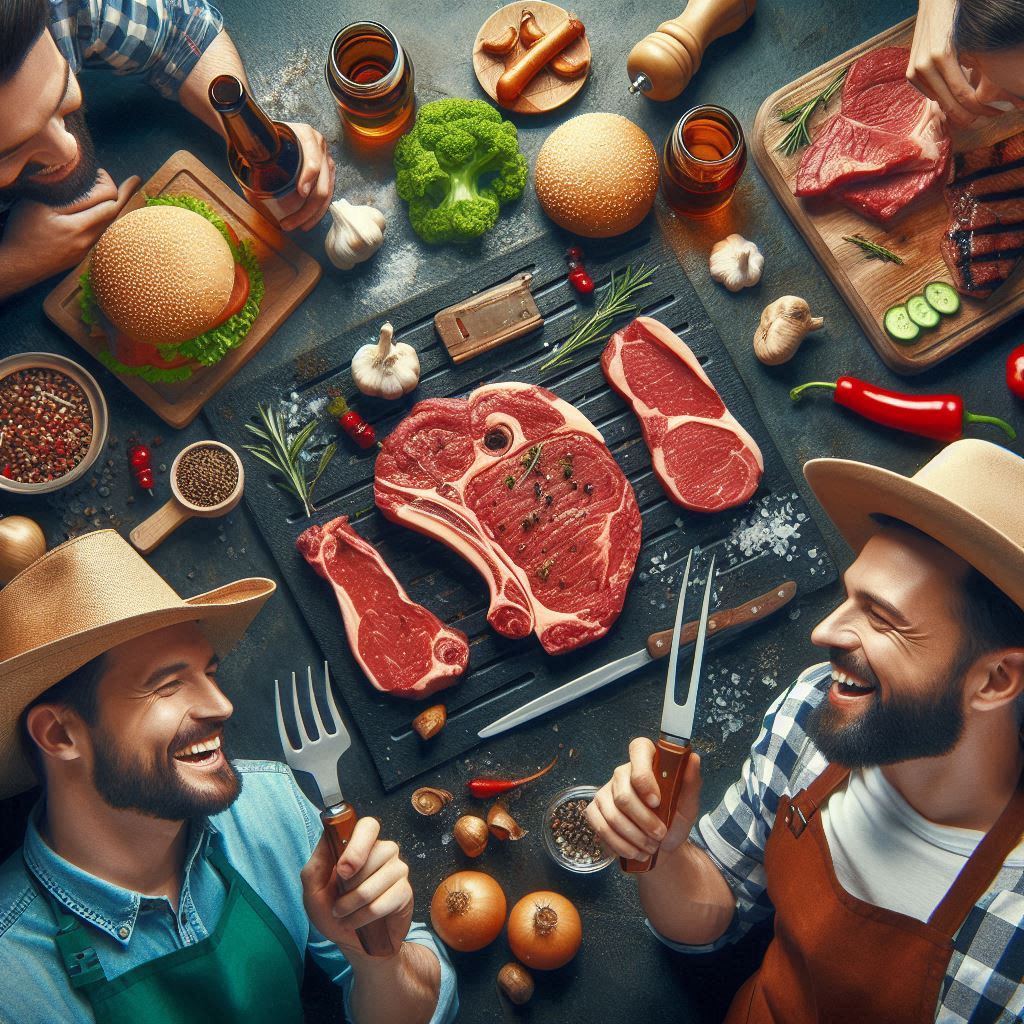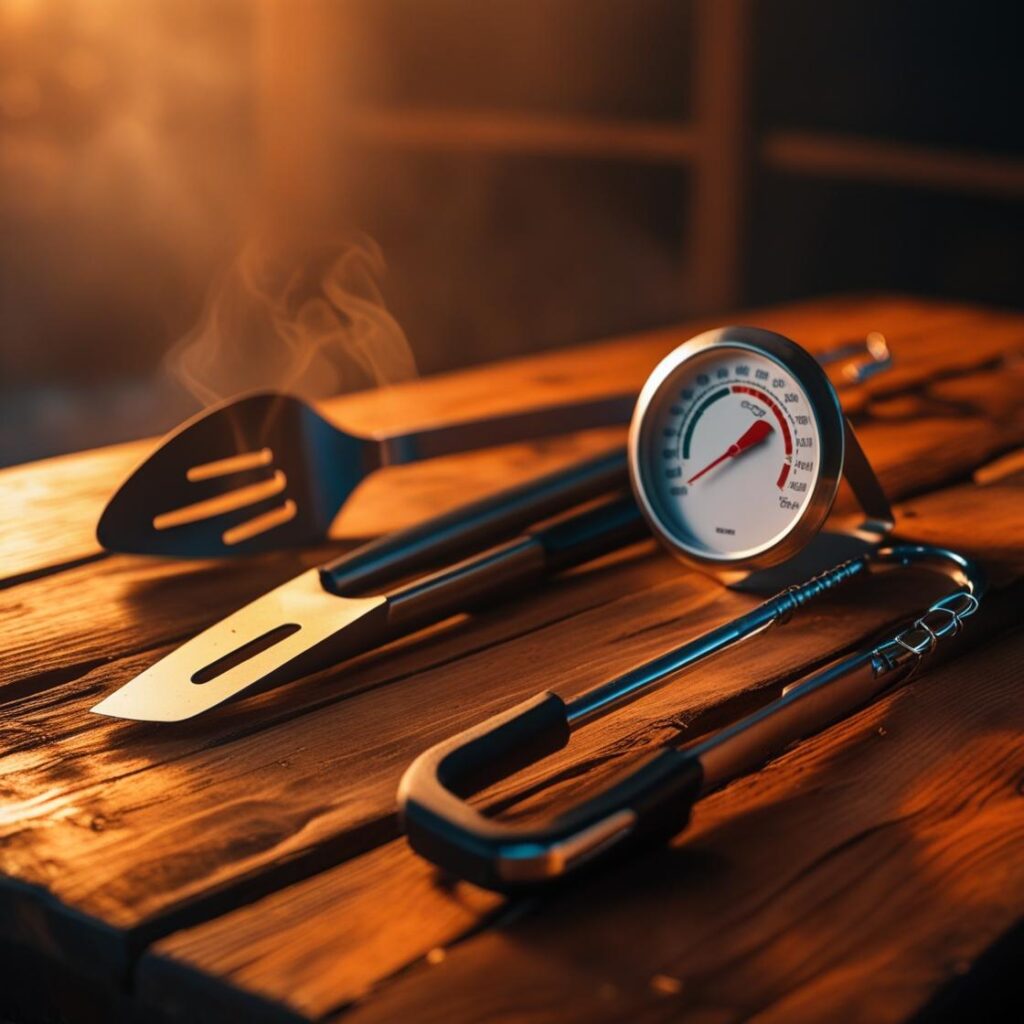15 BBQ Secrets Professional Chefs Won’t Tell You
There’s a reason why the BBQ from a professional pitmaster tastes so much better than what most of us can make in our backyard. It’s not magic, and it’s not a secret ingredient handed down through generations. It’s a collection of simple, repeatable techniques that elevate the entire process from start to finish. If you’ve ever wondered what makes their BBQ so much more tender, juicy, and flavorful, you’re about to find out. We’ve compiled the 15 BBQ secrets professional chefs won’t tell you—the subtle-yet-powerful tricks that separate a good cook from a truly great one. By mastering these pro bbq secrets, you’ll be on your way to cooking like a seasoned pro.
The Foundation: Prep & Process Secrets
Secret #1: Salt is Your Best Friend, Not an Afterthought
The number one rule of professional seasoning is to use more salt than you think you need. A timid sprinkle won’t cut it. Salt is the foundation of flavor and the key to moisture retention. The key is to salt early and salt generously.
Secret #2: The Overnight Dry Brine is Non-Negotiable
Forget just sprinkling your rub on 10 minutes before cooking. The true secret to great bbq is the dry brine. This process involves coating your meat liberally with salt and a rub and letting it sit in the fridge, uncovered, overnight. This allows the salt to pull out moisture, create a concentrated brine, and then reabsorb back into the meat, ensuring a juicy, flavorful final product. You can learn more about this process in our guide on Brining Times for Different Meats.
Secret #3: Don’t Be Afraid of a Binder
Ever wonder how pro chefs get their rub to stick so perfectly to the meat? The secret is a binder. A thin layer of mustard, olive oil, or even hot sauce creates a sticky surface for the rub to adhere to. The binder won’t affect the final flavor but will ensure an even coat and help create that beautiful bark. This is one of the easiest bbq secrets to adopt for better results.
Secret #4: Trim Your Meat Like a Pro
Properly trimming your meat is a skill that takes practice, but it’s essential for even cooking. For cuts like brisket or pork butt, you need to remove any hard fat caps that won’t render down. Leave a thin, even layer of fat (about 1/4 inch) to help keep the meat moist. Trimming ensures that every part of the meat cooks at a similar rate.
Secret #5: The “No-Lid” Rule is for Beginners
A perfectly formed bark is a sign of a professional. If your pork butt or brisket has a soggy bark, it’s because you had too much moisture in the smoker. The secret? Leave the lid of your smoker closed as much as possible, and let the first few hours of the cook be a dry, smoky period. This is how the bark sets.
The Cook: Heat & Time Secrets
Secret #6: A Smoker’s Thermometer is a Liar
The gauge on the lid of your smoker is often inaccurate and can be off by as much as 50 degrees. Relying on it is one of the biggest bbq mistakes to avoid.
- The Fix: Professionals use a remote digital thermometer with an ambient probe. This probe sits on the grates, right next to the meat, giving you a true reading of the cooking environment. Without this tool, you’re flying blind, which is why a lot of meat comes out tough and dry.
Secret #7: Embrace the “Low and Slow” for Real Tenderness
This is not a myth. The reason your smoked meat is so tender is that a low, consistent temperature over a long period of time slowly breaks down the tough collagen and connective tissues in the meat. The ideal temperature range is 225°F to 250°F. Patience is the key to mastering these professional grilling secrets.
Secret #8: Don’t Fear the Stall
The dreaded “stall” is a frustrating but perfectly normal part of the smoking process. It’s when the meat’s internal temperature plateaus for hours on end, usually between 150°F and 170°F.
- The Fix: This is a sign of evaporative cooling. A pro knows to either be patient and wait it out or to “crutch” the meat by wrapping it tightly in aluminum foil or butcher paper. This is a crucial skill for how to bbq like a pro.
Secret #9: The “Hot and Fast” Is Also a Professional Tool
While “low and slow” is the rule for large cuts, a professional knows when to use a high-heat method. For steaks, burgers, or chicken, a screaming-hot grill is the secret to a perfect sear and a juicy interior. This is where the wisdom from Grilling Mistakes That Ruin Your Steak comes into play.
Secret #10: A Spatula is for Flipping, Not Pressing
Pushing down on your burger or steak with a spatula is a cardinal sin. This action squeezes out the juices, leaving you with a dry, tough piece of meat. The same goes for jabbing at your meat with a fork. This is one of the most basic but important professional grilling secrets.
The Finish: Sauce, Rest & Presentation Secrets
Secret #11: Glaze, Don’t Douse
Sauce is an important part of BBQ, but it should be a finishing touch, not a marinade. Applying a thick sauce too early will cause it to burn, creating a bitter flavor.
- The Fix: Apply your sauce or glaze in the final 15-20 minutes of the cook. This gives the sauce time to caramelize and become tacky without burning.
Secret #12: The “Probe Test” is the Ultimate Sign of Doneness
A chef knows that temperature is a guide, not a final answer. The ultimate pro bbq secret is to use the “probe test.” When the meat is done, a meat probe should slide in and out of the thickest part of the meat with almost no resistance, like a hot knife through soft butter. This means the collagen has fully broken down. A good remote thermometer like the one sold by <a href=”https://www.google.com/search?q=wireless+meat+thermometer” rel=”nofollow”>BBQ & Grilling Co.</a> (a hypothetical external link) can help you monitor this perfectly.
Secret #13: Rest is Just as Important as the Cook
You’ve waited for hours, but this final step is non-negotiable. Skipping the rest period is a bbq mistake to avoid at all costs.
- The Fix: After removing the meat from the smoker, let it rest, loosely tented with foil, for at least 30-60 minutes for a brisket or pork butt. This allows the juices to redistribute throughout the meat, guaranteeing a juicy, tender slice every time.
Secret #14: Slice Against the Grain
No matter how perfectly you’ve cooked your meat, if you slice it with the grain, it will be tough and chewy. Professionals know to always slice against the grain.
- The Fix: Look at the muscle fibers running through the meat and make sure your knife slices perpendicular to them. This shortens the fibers, making every bite incredibly tender.
Secret #15: A Spray Bottle Is Your Friend
A secret tool of many pros is a simple spray bottle. A light spritz of apple cider vinegar, apple juice, or even a simple water mixture every hour helps to keep the surface of the meat moist, which in turn helps to form a great bark and adds a subtle layer of flavor.
Summary of the 15 BBQ Secrets Professional Chefs Won’t Tell You
| # | Secret | Explanation |
| 1 | Salt Generously | Use more salt than you think you need to bring out flavor. |
| 2 | Dry Brine Overnight | Salt and season the meat 12-24 hours in advance for deeper flavor. |
| 3 | Use a Binder | A thin coat of mustard or oil helps the rub adhere. |
| 4 | Trim Your Meat | Evenly trim fat for a uniform cook. |
| 5 | Build a Dry Bark | Leave the smoker lid closed and don’t spritz too early. |
| 6 | Trust Your Thermometer | Use a remote probe to get an accurate reading. |
| 7 | Low and Slow is Key | Cook at 225-250°F to break down collagen. |
| 8 | Embrace the Stall | The temperature plateau is normal. Be patient or wrap it. |
| 9 | Use High Heat When Needed | A hot grill is essential for searing steaks and burgers. |
| 10 | Don’t Press the Meat | Squeezing the meat with a spatula pushes out juices. |
| 11 | Glaze at the End | Apply sauce in the last 15-20 minutes to prevent burning. |
| 12 | Use the Probe Test | The ultimate sign of doneness is a probe sliding in smoothly. |
| 13 | Rest Your Meat | Rest for 30-60 minutes to let juices redistribute. |
| 14 | Slice Against the Grain | Look for the muscle fibers and slice perpendicular to them. |
| 15 | Use a Spray Bottle | A light spritz helps keep the surface moist and forms a great bark. |
FAQ: BBQ SECRETS
What is the most important secret to getting tender BBQ?
The most important secret is patience. Getting tender BBQ is a function of time and temperature. A low and slow cooking method over a long period of time is what allows the tough connective tissues in the meat to break down into gelatin. This is also a key factor in avoiding the biggest smoking mistakes to avoid.
Why is dry brining so important, and is it better than a wet brine?
Dry brining is crucial because it allows salt to penetrate the meat more deeply and effectively than a wet brine. While both methods work, dry brining allows you to achieve a much crispier bark or exterior since you’re not adding extra moisture. For more information, check out our guide on Wet Brining vs Dry Brining.
What’s the best way to fix a tough piece of smoked meat?
If your smoked meat comes out tough, it’s likely because you pulled it off the heat too early. The only way to fix it is to cook it again. Place it back on the smoker, or in a low oven (around 250°F), wrapped in foil with a little bit of liquid (like apple juice or broth), until it reaches the desired internal temperature (around 205°F for most cuts).
Should I always use a binder with my rub?
While not strictly necessary, a binder is a simple trick that professionals use to ensure a thick, even coat of rub. It also helps to lock in some moisture and can contribute to a better bark. It’s one of the easiest chef bbq tips to implement.
What is the biggest mistake a beginner can make when trying these professional tips?
The biggest mistake is not using a meat thermometer. All the other tips, from managing the stall to resting, depend on an accurate reading of the meat’s internal temperature. Without one, all your other efforts are a guess.
Why do I need to slice against the grain?
Slicing against the grain cuts across the muscle fibers, making them much shorter. This makes every bite more tender and easier to chew. Slicing with the grain leaves the long muscle fibers intact, resulting in a tough, stringy piece of meat.
What are some of the most common seasoning mistakes?
Some of the most common seasoning errors include not using enough salt, not seasoning the meat early enough, and using too many spices that have no time to penetrate. You can read more about this in our guide on 10 Seasoning Mistakes for Flavorful Meat.
Conclusion: Go From Amateur to Pro
Mastering BBQ isn’t about having the most expensive smoker or the fanciest cuts of meat. It’s about a deep understanding of the process, from preparation to presentation. By adopting these 15 BBQ secrets professional chefs won’t tell you, you are taking the guesswork out of the equation and replacing it with proven, repeatable techniques. So the next time you fire up the grill, remember these pro bbq secrets, and get ready to create a meal that will have everyone asking for your secrets.

